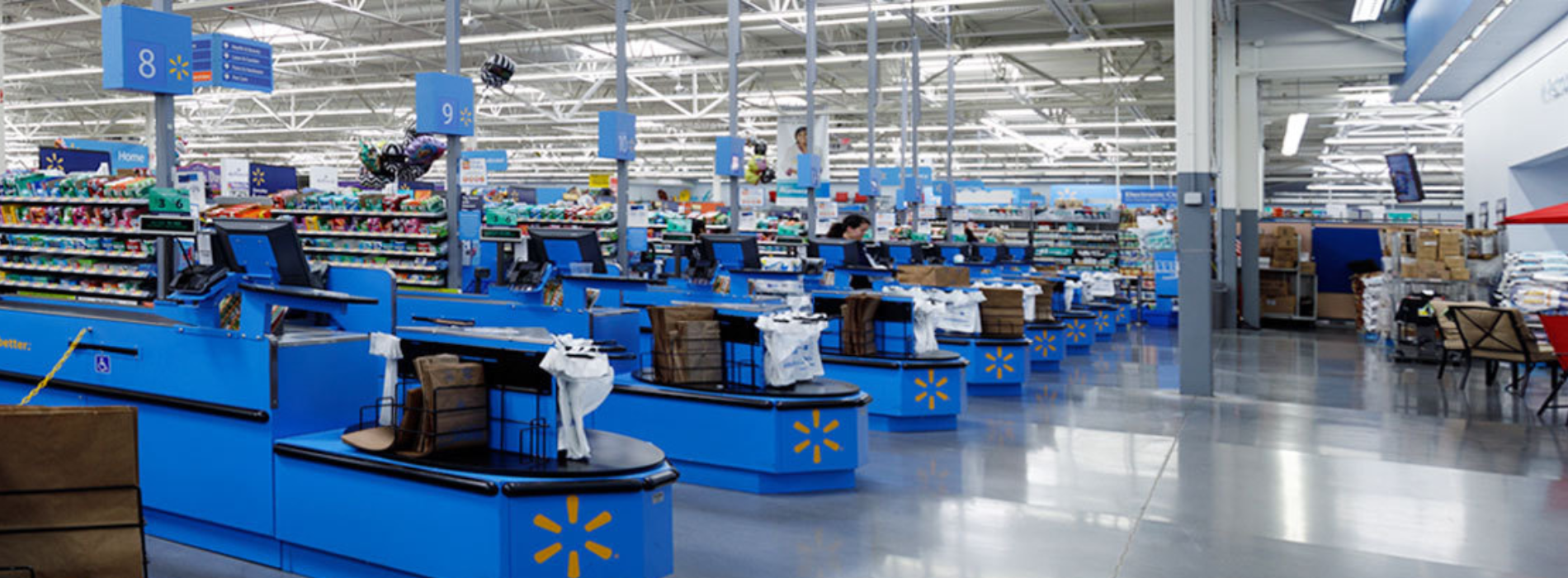

Project Shows Promise of Big-Box Energy Efficiency
During an energy efficiency project deploying precommercial technologies at a 26-year-old Walmart Supercenter in Covina, California, electricity use was cut by more than 30%, demonstrating a cost-effective path for retrofitting other large retail stores to help meet state greenhouse gas reduction goals.
California seeks to increase energy efficiency in buildings by 50% by 2030 to provide clean air and climate benefits. Among the tools prescribed in the Clean Energy and Pollution Reduction Act (Senate Bill 350) is retrofitting existing commercial buildings, particularly in warmer inland communities.
The Big Box Efficiency Project was fnded by a $2.8 million grant from the California Energy Commission to the Center for Sustainable Energy (CSE) in partnership with Walmart and Southern California Edison.
Project partners and technologies
The project deployed an integrated, networked suite of precommercial energy-saving technologies in a real-world environment. The technologies were developed by industrial partners i2Systems, Integrated Comfort Incorporated, Saya Life, Turntide Technologies and Locbit.
The Big-Box Efficiency Project evaluated the benefits of combining five different energy efficiency measures:
- Efficient, direct current-capable LED lighting.
- Smart motors for refrigeration and heating, ventilation and air conditioning.
- Precooling outside air using water and evaporation to reduce electricity needed for air conditioning.
- Smart water management to reduce waste.
- An Internet of Things building energy management systems platform to analyze data and identify energy savings opportunities.
Project results and savings
Before the project, the Walmart Supercenter consumed nearly 3,448,000 kilowatt-hours (kWh) a year in electricity, with annual peaks in summer months due to increased cooling needs. After project installations, whole-building electrical savings from the new technologies were 22.5% with an additional 9.9% from unidentified end uses for a total of 32.4% savings.
“The Big-Box Efficiency Project provides a blueprint for using emerging technologies in a holistic way to yield significant energy savings, which cuts costs, lessens demand on the grid and helps curb emissions from energy production,” said CSE senior manager Rebecca Baptiste. “As these precommercial technologies move toward commercialization and larger scale production, future installations could result in lower upfront costs, improved financial performance and shorter payback periods.”
Walmart’s commitment to zero emissions
Walmart is committed to powering 100% of its global operations with renewable energy by 2035 and achieving zero emissions across global operations by 2040. The company is collaborating with the industrial partners in this project to research opportunities to further drive building energy efficiency savings and increase store resiliency.
“The Center for Sustainable Energy has collaborated with Walmart every step of the way in this demonstration project to help validate the savings potential of precommercial energy efficiency technologies,” said Bob Stone, senior manager of Renewable Power & Energy Efficiency at Walmart. “We value CSE’s deep expertise and experience in guiding the project and identifying key lessons that can be applied to similar projects as we work toward a zero-emissions future.”
For more details on the demonstrate test, download the final report Empowering Energy Efficiency in Existing Big-Box Retail/Grocery Stores on the California Energy Commission website.

